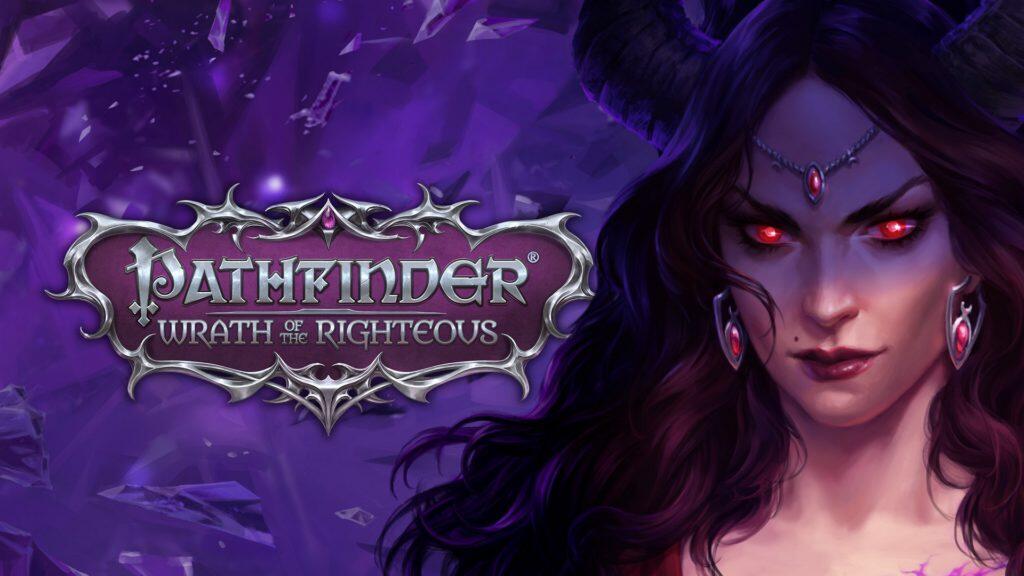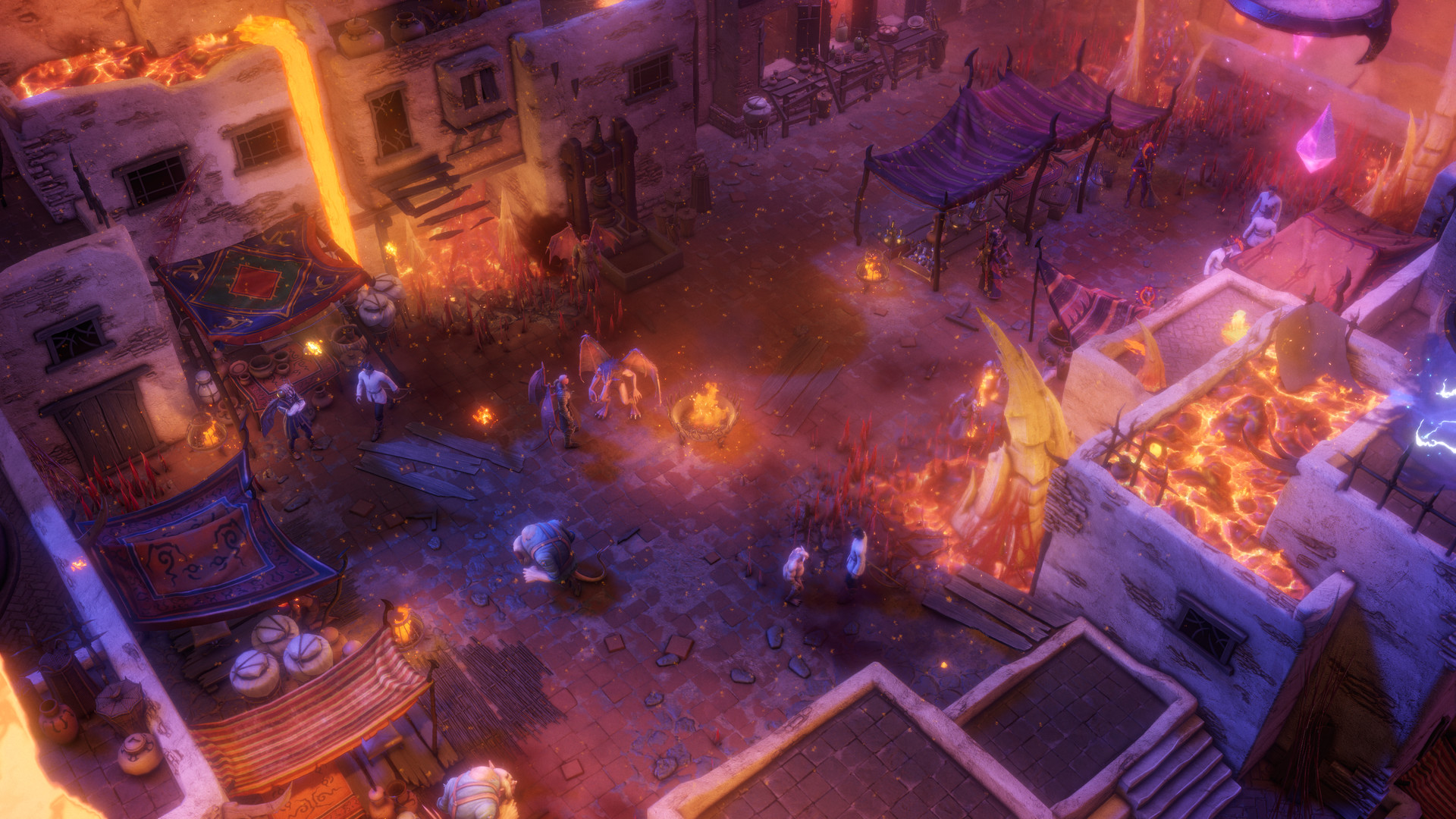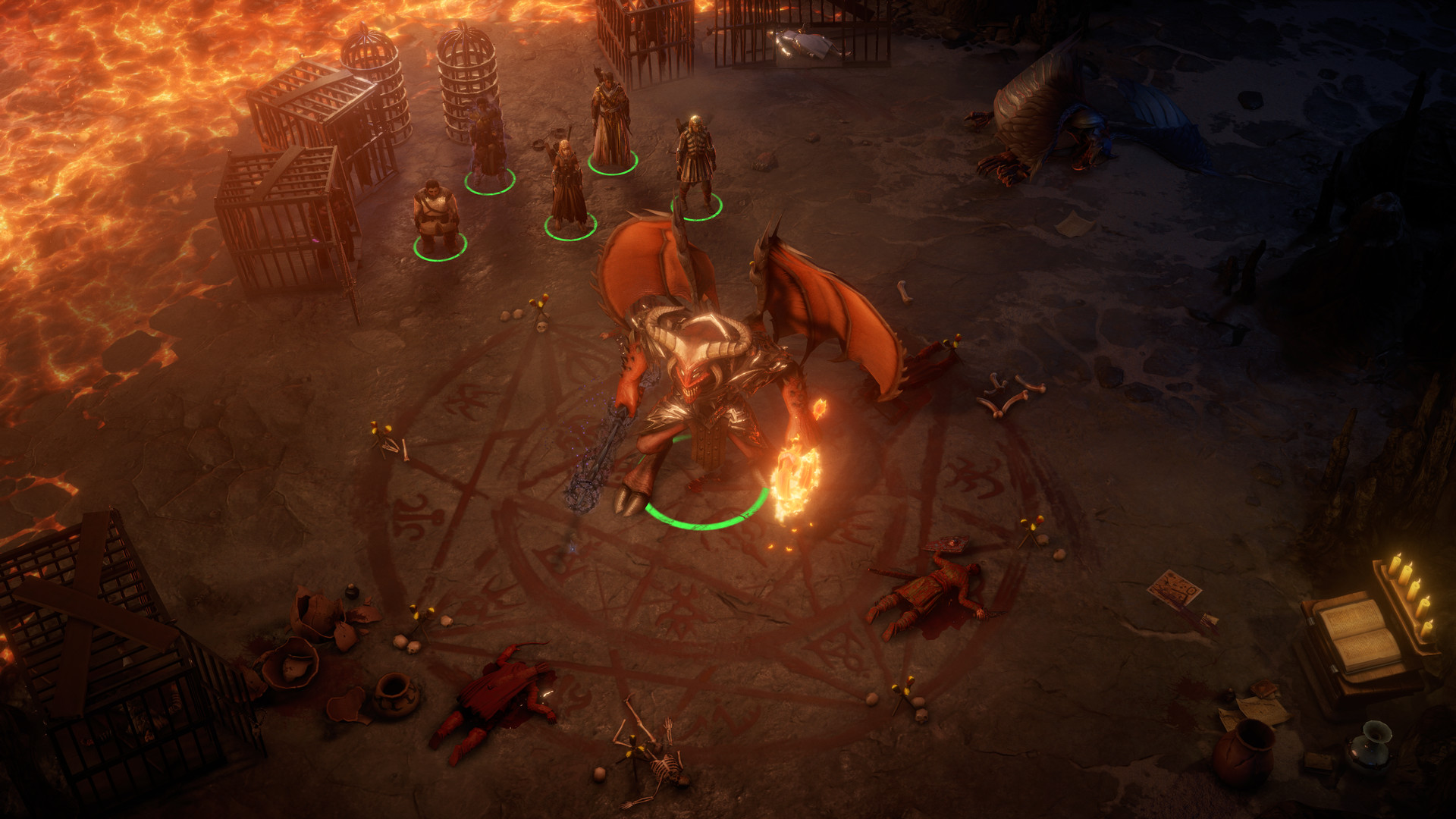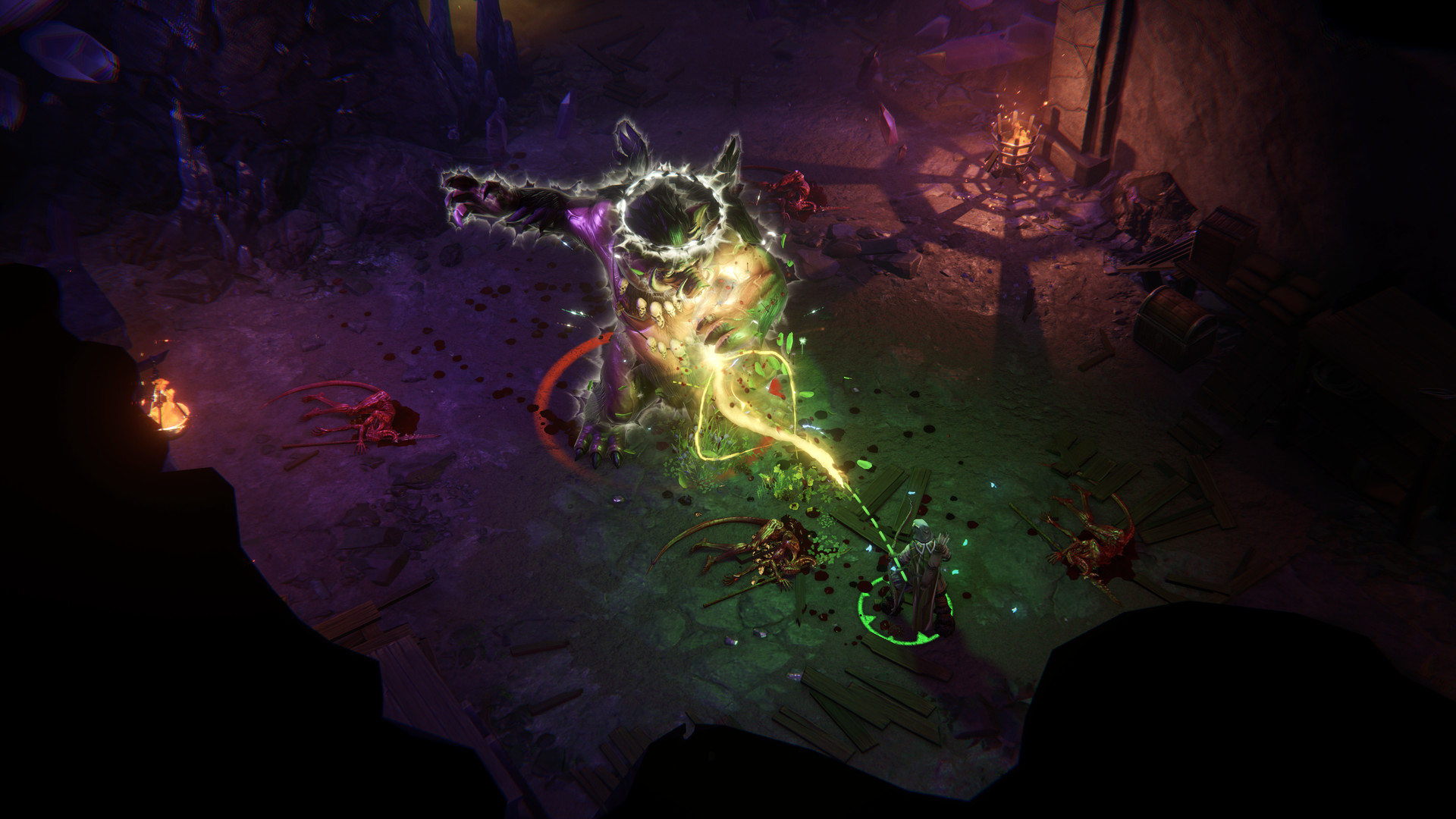
The Pathfinder video game series that has been going since 2018’s release of Pathfinder: Kingmaker, which was originally released on PC and later consoles, has now followed suit with the sequel, Pathfinder: Wrath of the Righteous, also making the leap to consoles. Based on the tabletop game, Pathfinder, this fantasy-driven experience rolls the complexity of the Dungeons and Dragons-inspired rule set into high functioning and as streamlined experience as possible. Available now on Xbox One, X|S, Playstation 4|5, and Nintendo Switch, having more ways to play is always a welcome idea.
Set in the war-ravished Mendev, countless crusades have left the world infested with demons, a world in which you have been left within an inch of your life. A perfect setting for you to piece your life back together as you figure out what brought on the Worldwound that tore a hole into the Abyss, find out where your mystic powers came from, and who you can trust in your expansive journey. I hope you are in this for the long haul, as the world-building is laid out thick, to begin with, and there will be a substantial undertaking for the in-depth lore and intricacies associated with Pathfinders.
The grandiose storyline, while well delivered and thought out, is but a taste of the plater on offer, with the meat of the meal being found in the character investment opportunities and the nuance of the many places you visit. With stellar voice acting paired with additional storytelling prompts during the text-only sections, it was clear the dialogue was bolstered by a clear love of the craft. Specifically for the recruitable characters, the emotions, traits, and background stories offered can give you both desirable feelings and flaws to deal with, which give more than a clean-cut, yet stock standard response would offer.

Since the character animations are often static as the camera angle is a drawn out, top-down asymmetrical angle, the stage direction or scene descriptions in the text were a nice way to offer more of a personal touch and is reminiscent of the Dungeon Master describing the scene to the eager players around the table. Something as simple as, “they recoiled in disdain,” in between the lines of dialogue, helped to visualise the scene in place of on-screen actions.
That’s not to say the game art style and the atmosphere isn’t appealing, the towns, caves, biomes, and demons are filled with colourful, detailed, and varied spread of classical fantasy themes. The dulcet tones and playful cheers while in the town squares, demonic screeches, and battle drums were part of many layers of ambiance on offer. The flicker of a flame that dances through the darkness can still cast deep shadows while the bright sunshine illuminates the surroundings and highlights the brimming building designs with wooden shambles to stone-clad kingdoms.
The most authentic art style design to show off is the parchment-style menu that offers an absolutely staggering amount of detail akin to the tabletop version of the game would offer. Considering there are over 25 classes to pick from, all of which can behave differently depending on which of the 12 races you decide to roll with, there is a high chance you won’t experience the same game that someone else does. The character creation page alone took me half an hour to wade through as I tried to pick my character alignment, dashing good looks, and of course, a comical name.
There was a lot to swallow and the game offers plenty of ways to ease someone into the experience. The menu can break down the characters’ base stats for strength, dexterity, constitution, intelligence, wisdom, and charisma, which will be the most important numbers you will need. The skills, effects and conditions, abilities, martial, and class tabs break down the benefits of how to build your character and what proficiencies will lead to the most optimal outcome. For a newcomer that doesn’t want to study a near bible of information, there is an auto-level system for the party and a level of stat dump options that can get you by.

The big challenge on top of mastering the menu is how to control a party of six through the treacherous world. The standard move with the left stick and spinning the camera with the right will start you off, but the menu navigation can be broken down into bite-sized pieces. Hold the left trigger to bring up the party so you can tether players together to issue joint commands, order them to go into stealth mode, or toggle the AI for them to act on their own.
Tap left on the D-pad if you want to activate cursor mode to click and direct your party so they will automatically move. This was a rather neat feature, I must say. Hold down the right trigger to bring up the menu options to level up, check your inventory, map, or change the character formations for better survivability.
For standard battles, being able to switch between real-time combat with a pause function and a regimented turn-based combat system showcased two very different yet well-thought-out experiences. With multiple skills to pick from, going at a slower pace is helpful to navigate the action bar, even if there is no real quick pick option.
Being able to quickly pause, survey the battlefield and issue commands before watching the fight play out in real time was very satisfying, but for a newer player or those interested in stats, the turn-based style helps to understand the combat. Everything is based on a dice roll system which is automatically applied but it was nice to see the D20 rolls, and the negative or positive buffs being applied depending on how your character build could influence your choice on how to level them up or kit them out.

Furthermore, to the standard combat styles, you will face, there is a Crusade Mode which brings the larger strategical side of things to the forefront. This mode is dedicated to commanding armies in a more traditional grid-based board game-style event that involves moving entire armies that you can rally through the campaign. This is a much slower pace to the run-of-the-mill kill, loot, and grind style that will be your main experience, however, these moments have deeper implications and offer a deeper strategic experience. On top of the armies you gather, building fortresses and placing monuments in them is critical to success, as is recruiting Generals at the right time.
With so much on offer, it was nice to be able to customise the overall experience through one handy difficulty menu. Straight off the bat, you can pick from seven pre-set difficulties that start out with the story that prevents total character death and crit attacks to the literal unfair option, which is just Satan’s playground. A custom feature breaks down what each difficulty does differently and can be adjusted to keep the critical hits on yet turn off the Death’s Door feature, so you can continually be beaten up, yet not lose a character in the process. Or, if you want the threat of death, you can keep the Death’s Door feature on but scale the damage or number of enemies down to keep the thrill in a safer way. I shouldn’t be surprised given the amount of detail in everything else, but this was a truly impressive feature.
For an enriching experience in lore, strategy, and character development, look no further than Pathfinders: Wrath of the Righteous. It is not often such a complex and intricate game that can transfer so well to a console, even more so without sacrificing features from the PC counterpart. This game will require a lot of dedication to fully understand the ins and outs, and even more, time to begin to master the building crafting or the Crusade modes, but every hour invested is another brick in the foundation of Pathfinders.

The Good
- Sliding scale system to customise the difficulty of the experience
- Toggle between turn based and real time with a pause option give two very distinctive playstyles
- The menu system is daunting at first but through dedication and study, the expanse of information turns from overwhelming into engrossing
- Character dialogue is brought to life through stellar voice acting and stage direction prompts during text-based interactions
- Controller adaptation to a PC style game was responsive and felt natural
- Crusade mode breaks up the dungeon diving experience for a grander higher stake’s mode
The Bad
- So much customisation but not much in the way of hotkey tools
- Intensive reading may limit the retention span of players who want more action








